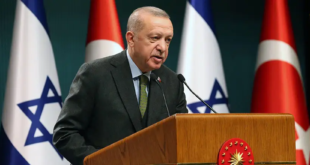King, in US, sends condolences letter to YudhoyonoÂ
YOGYAKARTA (AP) — A powerful earthquake flattened homes and buildings in central Indonesia early Saturday as people slept, killing more than 3,505 and injuring thousands more in the nation’s worst disaster since the 2004 tsunami.
The magnitude-6.2 quake struck at 5:54am near the royal city of Yogyakarta, 250 miles east of the capital Jakarta.
It was centerd about 10 kilometres below the surface, the US Geological Survey said.
Activity picked up at nearby Mount Merapi, one of the world’s most active volcanoes, and one geologist warned the temblor could still spark a large eruption, though another downplayed those concerns.
The quake in the heart of densely populated Java Island knocked down scores of houses, a hospital and government buildings, sending hysterical people running into the streets. Many roads and bridges were destroyed, hindering efforts to get taxis and pickup trucks filled with wounded to packed hospitals.
In the hardest-hit district of Bantul, rescuers tried to pull bodies from the rubble as residents started digging mass graves, rows of corpses awaiting burial beneath the blazing sun.
Subarjo, a 70-year-old food vendor, sobbed next to his dead wife.
“I couldn’t help her,†he said. “I was trying to rescue my children… and then the house collapsed.†President Susilo Bambang Yudhoyono ordered the army to help evacuate victims and arrived in the province Saturday afternoon with a team of Cabinet ministers to oversee rescue operations. He also told people not to fear a tsunami.
At least 3,068 were killed, Social Affairs Ministry official Sopar Jaya said, adding that two-thirds of the fatalities occurred in devastated Bantul.
“The numbers just keep rising,†said Arifin Muhadi of the Indonesian Red Cross, adding that more than 3,400 people were hurt.
As night fell across the affected area, tens of thousands of people were preparing to sleep outside their homes, fearful of aftershocks. Power was out across much of the region, adding to their terror.
In the chaos that followed the quake, civilians carried bloodied survivors, including children, into hospitals, sometimes jumping off flatbed trucks used in construction.
Large cracks crisscrossed some roads, while others had collapsed.
Doctors struggled to care for the injured, hundreds of whom were lying on plastic sheets, straw mats and even newspapers outside the overcrowded hospitals, some hooked to intravenous drips dangling from trees.
Bloodstains littered the floor at Yogyakarta’s Dr Sardjito Hospital, along with piles of soiled bandages and used medical supplies. Relatives read verses of the Koran to the injured.
“We are short of surgeons,†said hospital Dr. Alexander.
“There are still so many critically injured people here.†By nightfall, health officials at the hospital had tallied 89 dead, but bodies kept arriving and some family members were taking them home before they could be added to the official toll.
“Our emergency care unit is overwhelmed,†said Heru Nugroho.
Japan and Malaysia said they would send medical teams, and the United States and the European Commission also said they would send emergency aid. UN World Food Programme and UNICEF offered humanitarian assistance and tents to shelter those left homeless.
The quake hit close to the rumbling Mount Merapi, and soon after the temblor a large burst of hot clouds and debris avalanched 3.5 kilometres down its western flank.
No one was injured.
Bambang Dwiyanto, the energy and mineral ministry’s chief geologist, said the two events did not appear to be directly related, but warned that Saturday’s earthquake could still trigger a larger eruption.
“It will influence the activities of Mount Merapi, particularly in the lava dome,†he cautioned.
A geological researcher at the Indonesian Science Institute said, however, he did not think the quake was powerful enough to create a large eruption.
“It has increased pressure of lava and raised activities, but I don’t think it will have a significant impact,†said Dani Hilman.
The quake cut electricity and phone lines in some areas.
It also cracked the runway at the airport in Yogyakarta, close to the famed Borobudur temple, closing it to aircraft until at least Sunday while inspections take place, Transport Minister Hatta Radjasa said.
Officials did not know if the 7th century Buddhist shrine, one of Indonesia’s most popular tourist attractions, was affected in the quake. Nearby Prambanan, a spectacular Hindu temple to the southeast, suffered some damage but it was not immediately clear how much.
Italy’s ambassador to Jakarta, Francesco Maria Greco, interviewed on Sky TG24 TV, said there appeared to be no foreigners among the dead or injured but cautioned that many of the injured are scattered in various hospitals making it difficult to check everything out.
Indonesia, the world’s largest archipelago, is regularly rocked by earthquakes because of its location on the so-called Pacific “Ring of Fire,†an arc of volcanos and fault lines encircling the Pacific Basin. On December 26 2004, a 9.1 quake triggered a tsunami that crashed into 11 countries across the Indian Ocean, killing more than 230,000 people, most of them in the Indonesian province of Aceh.
Yogyakarta, around 2,230 kilometres southeast of Aceh, was not affected by the killer waves.Â
 Eurasia Press & News
Eurasia Press & News



